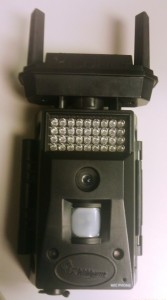 I just had to write this blog because I’m an outdoorsman (hunt, fish, camp, etc.) and Wi-Fi is showing up there. I spend many mornings and evenings in the fall season up in a tree, bow hunting. If you’re not familiar with the practice, bow hunting season begins in the fall (October 1, in Michigan), but if you’re really avid, you spend time in the spring and summer scouting likely deer trails, bedding and feeding areas, scrapes, rubs, transitions, etc. Given my interest in the wild places, I also subscribe to Field & Stream magazine, which recently featured a “Gear Tip” highlighting the use of Wi-Fi enabled trail cameras.
I just had to write this blog because I’m an outdoorsman (hunt, fish, camp, etc.) and Wi-Fi is showing up there. I spend many mornings and evenings in the fall season up in a tree, bow hunting. If you’re not familiar with the practice, bow hunting season begins in the fall (October 1, in Michigan), but if you’re really avid, you spend time in the spring and summer scouting likely deer trails, bedding and feeding areas, scrapes, rubs, transitions, etc. Given my interest in the wild places, I also subscribe to Field & Stream magazine, which recently featured a “Gear Tip” highlighting the use of Wi-Fi enabled trail cameras.
A lot of hunters get worked up about deer, so they mount trail cameras in strategic locations in the woods trying to catch a glimpse (and hopefully understand the patterns) of a big buck. The trail cameras use infrared and heat sensors to detect an animal and trigger a snapshot or short video of the animal. In the past, hunters had to periodically check on the physical camera and download the pictures from the memory card. But in our modern era, who wants to travel all the way to each trail camera in the woods when radio waves can travel for us?
Continue reading...






